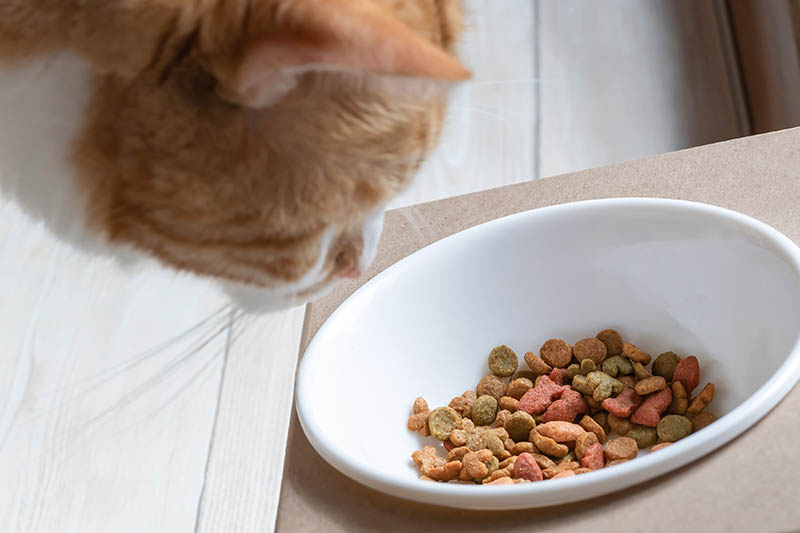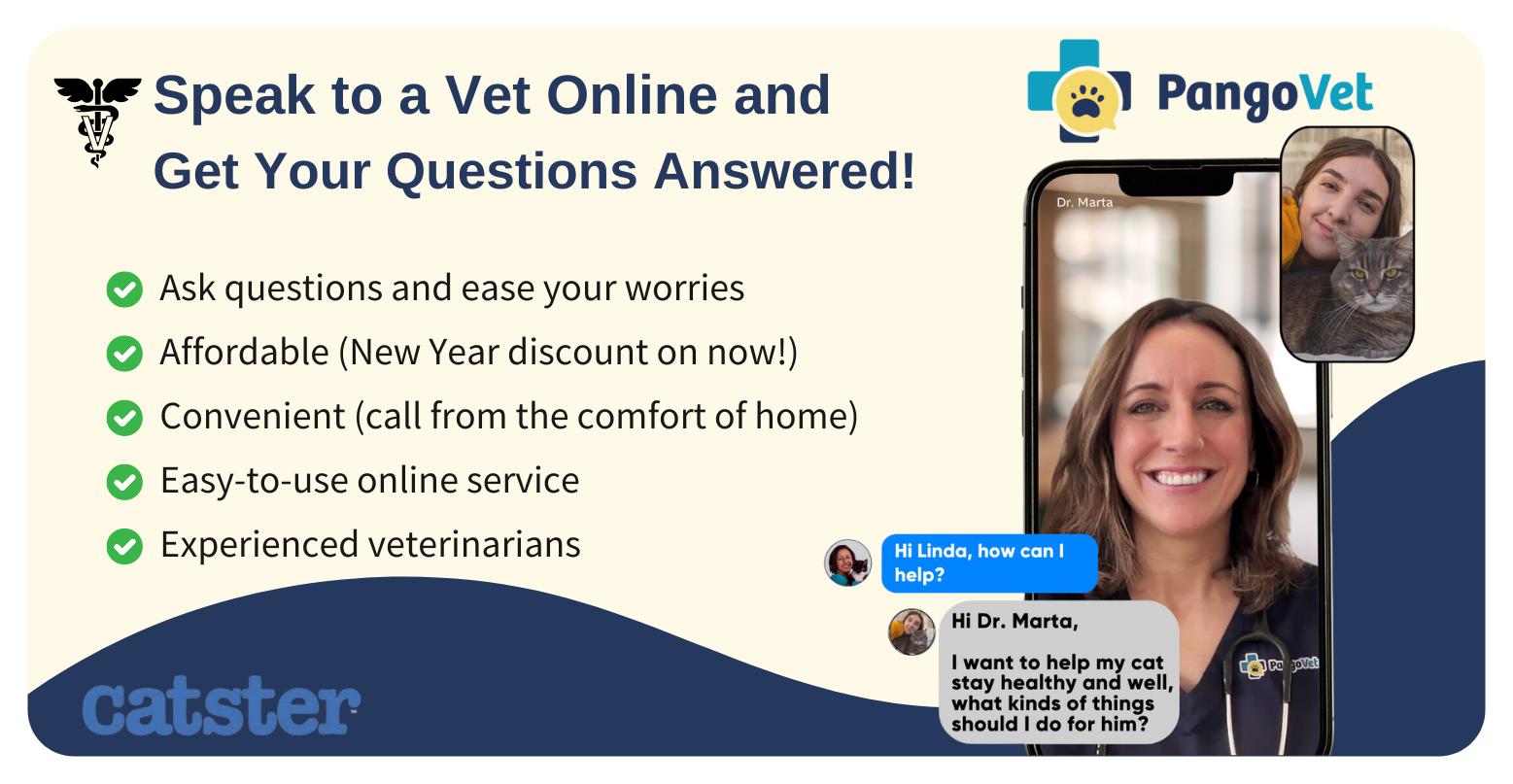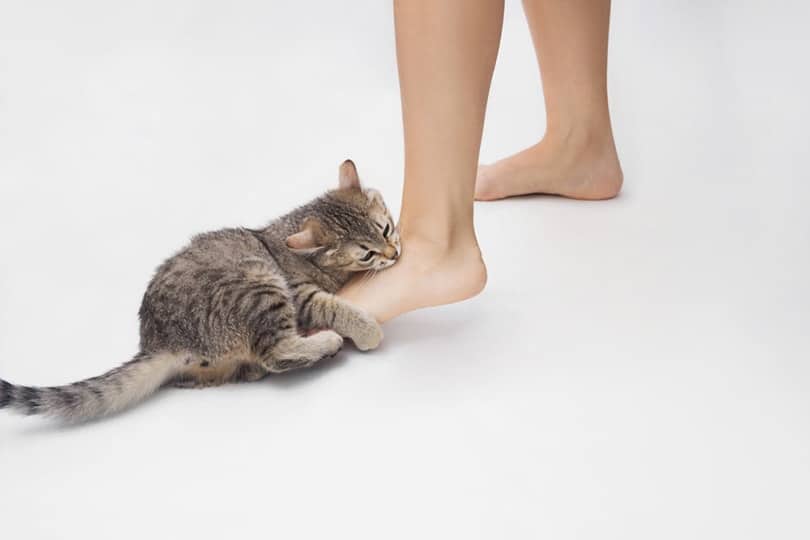These days, you can find all kinds of diets and meals for cats. While not all cats need to eat a grain-free diet, some cats may benefit from making the switch. Cats with certain health issues, such as food allergies and intolerances, may require eating a specialized diet, like grain-free cat food.
While it’s best to talk with your veterinarian before changing your cat’s diet, it’s still helpful to be well-informed about the different types of meals available to cats. We’ll go over some significant benefits and whether it would be appropriate for your cat to eat grain-free cat food.

The 5 Vet-Approved Health Benefits of Grain-Free Cat Food
1. Natural Diet
Cats are obligate carnivores, so their diet must primarily consist of meat. Cats are able to digest and process grains and vegetables, but it’s not recommended for them to eat a completely vegan diet 1. They need to eat a significant amount of meat because it contains nutrients that are essential for daily functioning and general health.
Most grain-free cat foods list some type of meat as their first ingredient, and they tend to be high-protein diets. So, it’s more likely that your cat will eat the required amount of protein they need daily.

2. Food Allergies and Intolerances
Grain allergies are rare in cats, but it’s still possible for cats to be allergic to certain grains like corn or wheat. Very rarely, cats can have gluten intolerance and experience an upset stomach or digestive issues.
Grain-free diets eliminate the risk of feeding your cat grains. Unfortunately, many introduce other carbohydrate-rich starches, such as sweet potatoes. Keep in mind that the difference between grain-free and gluten-free diets is that gluten-free diets only eliminate grains containing gluten. They may still include gluten-free grains like rice or oats.
3. Cleaner Ingredient Lists
You can find many grain-free cat foods that have cleaner ingredient lists than average cat food. Many cats that require grain-free diets also have food sensitivities and trouble digesting various foods. They’re more likely to get sick if they eat a wide variety of ingredients.
Many reputable cat food brands also are transparent about where they source their ingredients and make more of an effort to partner with ethical farms. You’re more likely to find food safety certifications and qualifications with high-quality grain-free cat food than with standard commercial cat food.

4. Easily Digestible
On top of having cleaner ingredient lists, many grain-free cat food brands tend to only use ingredients that are easily digestible for cats.
The reason for many grain-free diets also being easily digestible is that many cats requiring grain-free diets have sensitive stomachs. However, not all grain-free cat foods exclusively use easily digestible ingredients. So, make sure to check the ingredient list before purchasing the food.
5. High-Quality Sources of Protein
You can usually find more grain-free diets that use high-quality meat because grain-free diets are considered to be more premium or specialized than standard cat foods. However, some grain-free cat foods may still try to cut corners by using lower-quality meat. One of the best ways to determine if a grain-free cat food uses high-quality meat is to check the brand’s website.
Trustworthy brands won’t have anything to hide and will be transparent about where they get their meat. Many reputable brands will dedicate an entire webpage to providing ingredient-sourcing information to their customers.
Feeding your cat a high-quality diet is important for keeping them healthy and happy. But it goes beyond the food you choose; the dishes they use also matter. The Hepper NomNom Cat Bowl is our favorite for its unique, five-star design that protects from whisker fatigue and promotes good posture which also aids in better digestion. As an added bonus, it’s beautifully crafted and offers a modern take on the traditional cat bowl that fits seamlessly with all home stylings. Learn more about the NomNom by clicking here. At Catster, we’ve admired Hepper for many years and decided to take a controlling ownership interest so that we could benefit from the outstanding designs of this cool cat company!

How to Find High-Quality Grain-Free Cat Food
If you’re interested in switching your cat to a grain-free diet, make sure to consult your veterinarian first. Not all cats require a grain-free diet, and your veterinarian can help you determine if it’s an appropriate change for your cat. You can also ask your veterinarian if your cat needs to avoid eating certain ingredients that are found in a grain-free diet.
If you need to speak with a vet but can't get to one, head over to PangoVet. It's an online service where you can talk to a vet online and get the advice you need for your pet — all at an affordable price!
Not all grain-free diets are the same, and some may not even be that nutritious for cats. So, it’s important to do your research when shopping for grain-free cat food. In general, look for recipes that use cuts of real meat, like deboned chicken or wild-caught salmon. Reputable cat food brands tend to be transparent with ingredient sourcing, and many high-quality grain-free cat foods will use free-range chicken and ethically harvested fish.
Avoid grain-free cat foods that use ambiguous ingredients, like poultry by-product meals and artificial flavors. It’s also important to consider feeding your cat a grain-free diet with limited ingredients if your cat has particularly sensitive stomach and digestive issues. Limited-ingredient recipes can help you be more well-informed about the types of food you’re giving your cat and give you more control over what your cat’s eating.
It’s also important to ensure that a grain-free cat food recipe uses nutritious vegetables like kale and spinach. Some grain-free cat food recipes use lentils. While lentils aren’t toxic to cats, they produce gas, and some cats may have difficulty digesting them, ending up with upset stomachs. So, if your cat has a sensitive stomach, it’s best to avoid grain-free cat foods that use lentils as one of their main ingredients.

Conclusion
Grain-free cat food can benefit some cats. It’s especially beneficial for cats that have grain allergies, gluten intolerances, and other food sensitivities. While grain-free diets can have significant health benefits for some cats, not all cats need to eat them. So, make sure to discuss your cat’s diet with your veterinarian before making any changes to your cat’s diet. Your veterinarian can help you determine if grain-free cat food is appropriate and the best option for your cat.
Featured Image Credit: Princess_Anmitsu, Shutterstock











